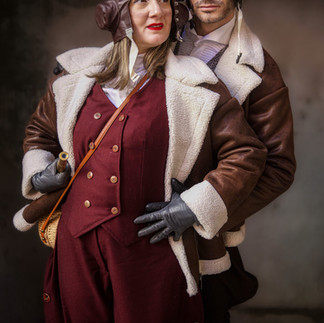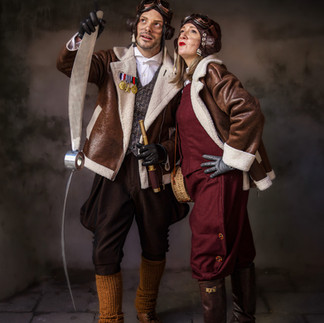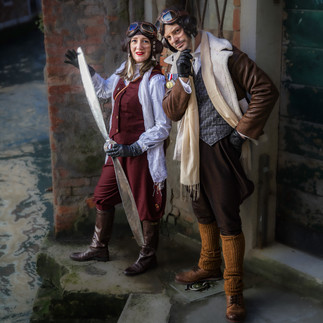Aviation Pioneers 航空先鋒
- Robin Yong

- May 5
- 3 min read



Venice, a city inextricably linked to the sea, might seem an unlikely cradle for aviation pioneers, yet its unique geographic situation fostered a surprising early interest in flight. While the city's lagoon wasn't conducive to traditional airfield development, its proximity to the open water and the strong winds funneling through its canals provided a unique testing ground for early experiments with lighter-than-air craft. Though overshadowed by the advancements in powered flight taking place elsewhere in Europe, Venetian inventors and engineers were actively engaged in developing balloons and dirigibles, often adapting their designs for the specific challenges presented by the Venetian landscape. These early efforts, though perhaps less widely documented, represent a fascinating, albeit less celebrated, chapter in the history of aviation. The inherent maritime culture of Venice, accustomed to navigating currents and winds, undoubtedly contributed to an intuitive understanding of aerodynamics that fueled these early experiments.


The dream of flight in Venice wasn't solely confined to the realm of scientific experimentation; it also captured the imagination of artists and writers. The city's romantic atmosphere and its iconic, airborne perspective fueled a rich cultural tapestry surrounding flight, visible in the artwork and literature of the period. Depictions of fanciful flying machines and aerial perspectives of the lagoon likely both reflected and influenced the technological pursuits of Venetian inventors. This intertwined artistic and scientific exploration of flight makes the Venetian experience uniquely distinct from the more purely engineering-focused approaches of other European aviation hubs.
Unfortunately, the lack of readily available funding and the logistical challenges presented by Venice's unique geography ultimately prevented Venice from becoming a major center of aviation innovation. The crucial resources and infrastructure needed to support the development and testing of larger, more advanced aircraft were simply unavailable. Nonetheless, the contributions of Venetian pioneers, however modest compared to their counterparts elsewhere, deserve recognition for their ingenuity and perseverance in the face of significant obstacles. Their efforts highlight the broader, global nature of the early pursuit of flight and the diverse perspectives that contributed to its eventual success.


Aviation pioneers are people directly and indirectly responsible for the creation and advancement of human flight capability, including people who worked to achieve manned flight before the invention of aircraft, as well as others who achieved significant "firsts" in aviation after heavier-than-air flight became routine. Pioneers of aviation have contributed to the development of aeronautics in one or more ways: through science and theory, theoretical or applied design, by constructing models or experimental prototypes, the mass production of aircraft for commercial and government request, achievements in flight, and providing financial resources and publicity to expand the field of aviation.
The 1920s witnessed significant advancements in aviation, with pioneering aviators like Charles Lindbergh and Amelia Earhart making headlines. These individuals pushed the boundaries of flight, crossing oceans and setting new records. The decade also saw the rise of air races and the development of air routes, making flying more accessible and popular.
The pioneer era of aviation set the stage for the rapid advancements in aircraft technology and the development of the aviation industry in the 20th century. The ingenuity and determination of these early aviators not only pushed the boundaries of what was possible in flight but also inspired generations of engineers, pilots, and enthusiasts to continue pushing the limits of aviation.

The Venice Carnevale is not solely about masks. Local Italians and an increasing number of foreign costumers now prefer historical costumes or painted faces. During Carnevale, the whole Venice becomes a real life theatrical stage, and many of these historical costumes carry deep perspectives...
My Italian friends Antonella and Omar comes to the Venice Carnevale this year in their Aviation Pioneer costumes. I always enjoy photographing this beautiful couple, so as usual, we did a short walk around town for some souvenir photos.
I have known Antonella and Omar for a decade now. Every year, I do a Valentine's Day photo session for the couple. The kissing scene at the bridge is our signature pose. Last year, we did a similar one in red tartan costume which was very "Gucci", This year, I take my inspiration from Polo Ralph Lauren....
As usual, all portraits are just done on the busy streets of Venice and using natural lighting only...There is no indoor photo studio, there is no artificial lighting, flash or reflectors...With my costumed friends, we try to take our street portraiture to an all new level....




















































































Comments